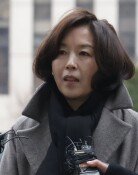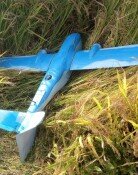Haphazard World Ceramic Exposition 2001 Korea
Haphazard World Ceramic Exposition 2001 Korea
Posted September. 27, 2001 09:03,
``For a long time, Kwangju has been renowned for its ceramics. However, they swept almost all shards of Choson porcelains in Kwangju area. While preparing for the Ceramic Exposition, they have cruelly destroyed the cultural properties of Choson porcelains…. What kind of Ceramic Exposition is this?``
A ceramic expert, who excavated the ruins of pottery kilns in Kwangju area, deeply sighed when he heard the news of how Kwangju City had destroyed the cultural properties.
Kwangju City government mobilized its low ranking officials and citizens in order to collect and dig out the shards of Choson porcelains. The ceramic experts pointed out that it was a really serious destroying act of cultural heritage.
First of all, this case startled people because of the tremendous amount of the collected shards. A city official said that the porcelain shards of 1.8 t were collected. But, a town official revealed, ``the shards collected only in our town amounted to 5 t, and the situation would be similar in other towns.`` Based on this remark, the estimation of the whole amount of the collected shards would be immense.
Actually, the porcelain shards of 800 kg were displayed in both in and outdoor exhibition places at the World Ceramic Exposition 2001 Korea. In addition, the Choson porcelain shards of 2,400kg were carelessly left in the bushes near the exhibition place of pottery kilns, Sangbuncheon-Ri, Jungbu-Myun. Only these pottery kilns sum up to 3.2 t, and it is nothing but a sweep.
The porcelain shards were just piled up in the glass containers rather than being properly displayed in the exhibition hall.
After looking around the exhibition places, an expert said regretfully, ``The Sangbuncheon-Ri exhibition place is the historical site where the first Choson pottery kilns for royal family was excavated. However, it looked like a heap of trash.`` Moreover, he said, ``Although, the historical relics can keep their value with the exact information of their excavation sites, there was no sign of exact unearthed places in the heap of shards.``
In both in and outdoor exhibition places, the exhibition organizers only presented the names of towns where the shards were unearthed, and did not specify the exact excavation sites among about 270 ruins of pottery kilns scattered around Kwangju City.
A city official explained, ``The city collected the shards of Choson porcelains in order to show the ceramic history of Kwangju area to the galleries. But there are just heaps of shards in the glass containers, and no explanation about Kwangju ceramic history is posted.`` Even a pedestrian, who helped to collect the shards, said, ``I cannot obtain any idea of the ceramic history, and do not understand the purpose of the collection.``
As it became a hot issue of preserving cultural heritage, Kwangju City reported this problem to the Cultural Properties Administration on August 14th. However, the Cultural Properties Administration has not conducted even an on-spot investigation thus far. Therefore, people criticize that ``both Kwangju City and the Cultural Properties Administration are concealing the problem, and are expecting that this issue will fade away in smoke after the World Ceramic Exposition 2001 Korea.`` Experts agreed that, through a thorough investigation, the responsible people should be censured, and the shards of Choson porcelains must be confiscated immediately and reverted to the state.
Lee Kwawg-Pyo kplee@donga.com



![‘건강 지킴이’ 당근, 효능 높이는 섭취법[정세연의 음식처방]](https://dimg.donga.com/c/138/175/90/1/wps/NEWS/IMAGE/2026/01/18/133181291.1.jpg)



